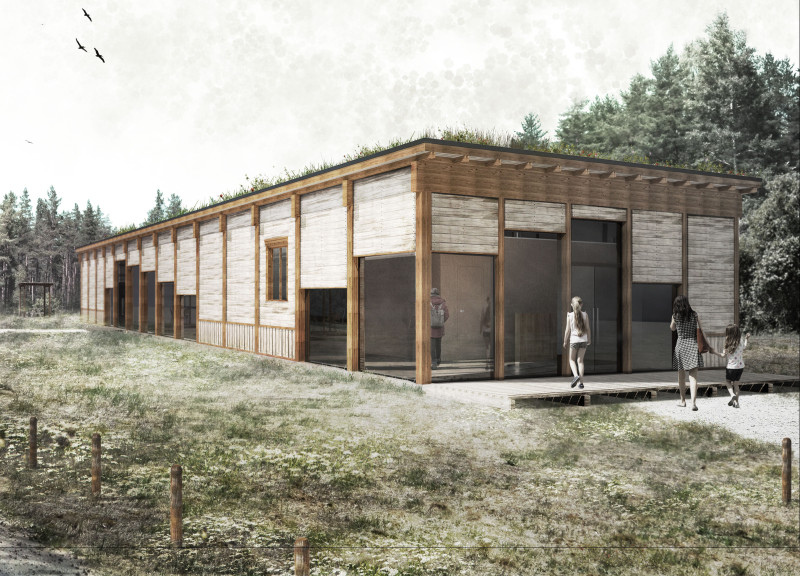5 key facts about this project
The primary function of the Visitor Center is to educate and inform visitors about the biodiversity of Kemeri Bog, including its flora and fauna. The design emphasizes accessibility, providing clear pathways and open spaces that encourage exploration. The visitor experience is enhanced by a layout that includes exhibition areas, communal spaces for gatherings, and facilities catering to the needs of different user groups. The building is strategically placed to minimize its environmental impact and to blend into the surrounding landscape.
Architectural Approaches in Design
This project stands out through its use of sustainable design principles and materials. Several unique elements contribute to its distinct architectural character. The incorporation of a green roof exemplifies a commitment to ecological design, allowing for natural insulation and promoting local biodiversity. This roof not only contributes to the building's environmental sustainability but also provides a visual continuity with the surrounding terrain.
The predominant use of local materials, such as plywood for the timber frame, aligns the structure with regional construction traditions. This choice not only supports sustainable practices by reducing transportation emissions but also enhances the tactile quality of the interior spaces. The integration of abundant glazing allows for natural light to permeate the building, creating inviting interior environments while establishing a visual connection to the outdoors.
Innovative Use of Space
The spatial organization of the Visitor Center reflects a thoughtful approach to functionality and user experience. Open plan layouts facilitate easy navigation and flexibility in usage, accommodating various visitor activities. The clear separation of functional zones—such as exhibition areas, social spaces, and visitor services—ensures that diverse visitor needs are met without compromising the overall coherence of the design.
The architectural plans effectively guide visitor movement through the site, encouraging an immersive experience that fosters an understanding of the surrounding natural environment. Additionally, the design incorporates educational features that highlight the ecological significance of Kemeri Bog, such as interpretive signage and interactive displays.
As you explore the Visitor Center at Kemeri Bog, consider reviewing the architectural plans, sections, and design elements for a deeper understanding of the project's innovative approaches and the architectural ideas that shaped its development.


























